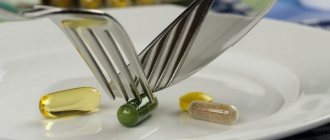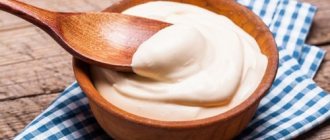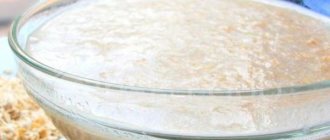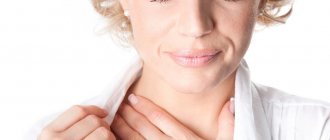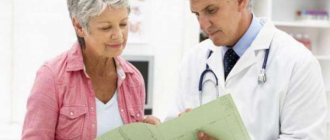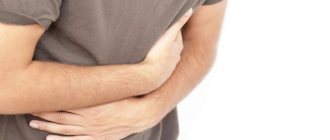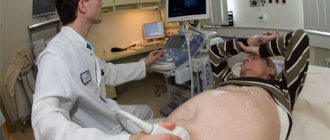About the biliary system
The gallbladder is a small organ located in the lower surface of the liver . It is a hollow formation in which bile coming from the liver tissue accumulates. The organ has a duct through which it is released into the duodenum. Bile is necessary for normal digestion, primarily for the breakdown of fats.
What products are prohibited?
For any pathologies in the gastrointestinal tract, including inflammation of the pancreas, cholecystitis, it is prohibited to consume:
- mushrooms;
- meat and fish first courses;
- confectionery products - buns, cookies, sweets, cakes;
- mayonnaise, sauces;
- legumes - beans, peas, soybeans;
- wholemeal bread;
- spices - coriander, cinnamon, pepper, curry;
- carbonated drinks.
If you have a problem with the pancreas and gall bladder, you should not eat cold or hot food, only warm food. It is necessary to abandon canned food, marinade, pickled vegetables, jellied meat and ice cream are strictly prohibited.
Diseases and their symptoms
The main pathology affecting the gallbladder is cholecystitis. This is an inflammatory disease that can have an acute or chronic course. The disease manifests itself as pain in the right hypochondrium, which intensifies when eating fatty foods, nausea, bloating and the appearance of fatty inclusions in the stool. Acute cholecystitis is an indication for surgery and organ removal.
The second most common pathology is biliary dyskinesia. It is characterized by a violation of the tone in the ducts through which bile is excreted into the duodenum. The main symptoms of the disease are heaviness and pain in the right hypochondrium, nausea, bitter belching and impaired bowel movements.
Changes in the pancreas
The functioning of the pancreas after removal of the gallbladder does not have any peculiarities. Some patients think that in the absence of a bile reservoir, pancreatic cells begin to perform its function. However, it is not. The pancreas produces only pancreatic juice, which contains a large amount of enzymes and is secreted into the duodenum . Enzymes ensure the digestion of carbohydrates and proteins.
Reference. The pancreatic duct joins the bile duct to form a single structure that opens into the lumen of the small intestine. This anatomical feature explains the close connection between the two organs.
Changes in the pancreas after removal of the gallbladder are associated with the characteristics of bile secretion in patients after cholecystectomy. Normally, it is released into the duodenum only when eating.
In the absence of a meal, bile accumulates in the organ, gradually concentrating there. If the patient has undergone cholecystectomy with or without pancreatitis, then it begins to constantly enter the intestine through the duct. Bile is an aggressive environment containing a large number of active enzymes. Its constant release leads to irritation of the mucous membrane of the common duct and the development of inflammation.
The inflammatory reaction can also affect the pancreas, causing chronic pancreatitis after removal of the gallbladder. However, there must be provoking factors in the form of drinking alcohol or poor nutrition.
Treatment of cholecystitis and pancreatitis with medications
After carrying out diagnostic measures, the doctor uses a comprehensive treatment method.
It includes the following aspects:
- Drug therapy.
- Strict adherence to dietary nutrition.
- Refusal of bad habits and harmful products.
- Maintaining a normal drinking regime.
- Fractional meals.
Antibiotics
When a strong inflammatory process occurs in organs caused by harmful microflora, specialists use broad-spectrum agents - antibiotics. Pharmaceutical companies produce medications in the form of capsules or tablets, intramuscular or intravenous injections.
In treatment they use:
- Amoxiclav;
- Ceftriaxone;
- Sigmamycin;
- Bactrin;
- Olethetrin.
During an exacerbation, the gentle medication Rifampicin is used.
Component Features:
- Has antimicrobial properties at the intracellular level.
- Widely used for bacterial infections.
- The composition contains the active ingredient – rifampicin.
- The dosage is calculated based on the patient’s body weight: per 1 kg – 10 mg of the drug.
- It is prohibited to use in case of hepatitis of an infectious nature, kidney failure, during pregnancy, children under 12 months of age.
- Adverse reactions to the components of the drug: gag reflexes, allergies, dizziness, decreased blood pressure.
It is worth remembering that antibiotics are used strictly as prescribed by a doctor and together with drugs against dysbacteriosis (bifidobacteria and lactobacilli).
In the acute phase of pancreatitis, Ampicillin is prescribed.
Main distinctive features:
- suppresses the development of pathogenic microflora at the cellular level;
- the main indications for use are infectious diseases of the digestive system;
- active ingredient – ampicillin;
- the drug is prescribed as an injection up to 500 mg every 6 hours;
- adverse reactions - fever of the patient, discharge from the nasal passages, joint pain, allergic reaction in the form of urticaria;
- It is prohibited to use in case of individual intolerance, liver dysfunction, infectious mononucleosis.
Choleretic drugs
Choleretic medications help normalize the flow of bile and partially pancreatic juice. They are recommended to be combined with antispasmodics. This type cannot be used if there are stony formations in the gallbladder or if their formation is suspected.
All choleretic medications are divided into 3 groups:
- Choleretics – enhance the formation of the substance.
- Cholespasmolytics - enhance the outflow of secretions from the gallbladder.
- Cholekinetics – similar in properties and action to cholespasmolytics.
Drugs are also classified according to their composition:
- synthetic;
- based on bile acids;
- on the sodium salt of dehydrocholic acid;
- plant base.
The latter include:
- Allohol;
- Essentiale Forte;
- Holenzyme;
- Ursosan;
- Hofitol, etc.
Medicines are taken half an hour before meals. The recommended daily dosage should be divided throughout the day based on the number of meals. Otherwise, it is difficult to talk about the effectiveness of the drug. Be sure to drink plenty of clean drinking liquid.
If you do not eat food after taking the medication, vomiting, nausea, and stool loss may occur. The average course of treatment is 21 days, the maximum is 8 weeks. As a preventive measure, it is allowed to repeat the treatment no more than 4 times a year.
Enzymes
Enzymatic medications are prescribed for pancreatitis. The main effect is to compensate for the lack of enzymes in the digestive system during illness and improve the process of digestion and absorption of nutrients.
The most popular include:
- Pancreatin is an enzymatic preparation without bile acids. Contains amylase, lipase, protease. The product normalizes the process of food digestion and the absorption of beneficial components. Pharmaceutical companies produce it in tablet form. Take before or during meals.
- Creon is similar in composition and action to pancreatin. The difference is that it comes in capsule form and is consumed during meals.
- Festal - contains active components for the bile and a complex of enzymes for the pancreas. Take 3 tablets during or immediately after meals. The dosage for an adult varies from 1 to 2 tablets. In pediatric therapy, it is allowed to be used over the age of 3 years. The course of treatment and dosage are determined by a specialist, individually.
Hepatoprotectors
To a greater extent, they refer to homeopathic remedies that serve to properly maintain the functioning of the gallbladder and prevent the development of liver failure.
The most common include:
- Hepatosan is a drug of animal origin. Produced in capsules for the treatment and restoration of the liver and gall bladder. The medication has protective properties against the harmful effects of toxic compounds on cells and reduces the absorption of unhealthy components. Side effects may include an allergic reaction.
- LIV-52 is available in the form of tablets and drops. Consists of natural ingredients. The product restores the activity of the liver and gall bladder, eliminates toxic compounds. It also improves metabolism and bile flow, preventing the formation of stagnation. Take 2 tablets 3 times a day. For children it is allowed to use at the age of 2 years. Side effects include digestive system upset, itching, nausea, and swelling. It has contraindications for use - pregnancy and breastfeeding, intolerance to components.
- Heptral dilates the bile ducts, improving the release of bile into the duodenum. It has pronounced antioxidant properties. Use strictly during meals.
- Phospholip. The active substance is lecithin. Produced in capsule form. During the acute phase, take 2 tablets three times a day, and during remission, 1 tablet 3 times. The course of treatment should not exceed more than 3 months.
Vitamins
Patients receiving vitamin complexes for cholecystitis and pancreatitis are less likely to complain of pain under the right rib.
As already mentioned, inflammation in the pancreas occurs due to stony formations in the bladder. They arise due to a lack of ascorbic acid and tocopherol.
B vitamins regulate the functioning of the sphincter of Oddi and tone the gallbladder, thereby activating the correct outflow of bile. If you follow a diet, enzyme substances will be produced in insufficient quantities. The diet is so meager that there are few vitamins in the body and they are not fully absorbed due to pancreatic dysfunction. It is for this reason that experts say that for pancreatitis and cholecystitis, it is especially recommended to take additional vitamin complexes.
In the acute period of disease development, the use of vitamins is unacceptable. Injections of B vitamins are allowed in the remission stage. You cannot combine injectable drugs in one syringe, otherwise there will be no result.
The best complexes are:
- "Vitrum";
- "Undevit";
- "Aevit";
- "Complivit";
- "Supradin" and others.
For pathologies of the pancreas and gallbladder, it is especially recommended to consume vitamin B12. It is this that helps restore the process of breaking down fat cells, normalizing metabolism and stomach function. For pancreatitis, this type of vitamin is prescribed not in tablets, but in injections.
Painkillers, antispasmodics
To eliminate pain during inflammation of the pancreas and bladder, medications with an analgesic and anti-inflammatory effect are used:
- Analgin;
- Ibuprofen;
- Aspirin;
- Diclofenac;
- Paracetamol;
- Baralgin.
In case of acute spasms of the digestive system, in case of impaired motility of the bladder and its ducts, a drug with an antispasmodic effect, Buscopan, is used.
For pain caused by increased tone of the walls of the bile ducts, take:
- Papaverine;
- Spasmalgon;
- Drotaverine;
- Galidor.
They relieve spasm of smooth muscle muscles, relax the duct and improve the outflow of bile.
Antacids
This type of medication reduces the secretion of hydrochloric acid, improving the digestion process and providing conditions for the normal activation of enzymes secreted by the pancreas.
Basically, for these pathologies, the drug “Almagel” is prescribed. The active substance is aluminum hydroxide, which became the basis for all drugs of this action.
Use for oral administration, shake first. Adults are prescribed 1 to 2 teaspoons, but if there is no result, the dosage can be increased to 15 ml for a single use. Take no more than 90 ml of the product per day. The main conditions are to follow the dosage, consume half an hour before meals and before bed.
The disease is accompanied by vomiting, nausea and pain; in this case, the drug “Almagel A” is initially taken, and after the unpleasant symptoms disappear, they switch to the main component.
Adverse reactions:
- Serious pathologies of the excretory system.
- Alzheimer's disease.
- Children's age up to 10 years.
- Individual intolerance.
- Congenital fructose intolerance.
Herbal preparations
There are a number of medicines created on the basis of medicinal herbs.
The most effective are products containing artichoke and milk thistle:
- “Legalon” is a hepatoprotector that relieves inflammation and restores cells. Depending on the dosage of the active component, take from 1 to 2 capsules 2-3 times a day.
- "Karsil" is a hepatoprotector with antitoxic properties. The course and dosage are prescribed by the doctor. Available in the form of film-coated tablets. The course of treatment should not exceed 90 days.
- “Hofitol” - normalizes the process of outflow of bile secretions and cleanses the blood of urea. Take 1 teaspoon 3 times a day. Adverse reactions – allergies, stool loss with prolonged use;
- "Cinemal" is a hepatoprotector that removes toxic compounds and restores tissue. Take 2 capsules three times a day before meals. Side effects - allergic reaction, stool loss. Do not use during pregnancy.
In the presence of cholelithiasis, medications are used carefully and after consultation with a specialist. Otherwise, your health condition may worsen, which will lead to the removal of the organ.
Gallbladder removal and pancreatitis
Pancreatitis occurs in a small number of patients after cholecystectomy. The main reason for the development of inflammation in the pancreas is non-compliance with doctor’s recommendations. Some patients drink alcohol after surgery and do not adhere to the prescribed diet, consuming foods rich in fat.
As a result, the amount of bile secreted increases. The absence of an organ leads to its reflux into the pancreatic duct, where an inflammatory reaction develops. Inflammation leads to the activation of enzymes that begin to digest the organ’s own tissue, contributing to the development of chronic pancreatitis.
If a person has already had damage to the pancreas, then cholecystectomy may cause an exacerbation of the pathology. Relapse occurs as a result of similar reasons: due to errors in diet and consumption of alcoholic beverages. However, in the absence of these factors, the likelihood of exacerbation is low.
Lifestyle for pancreatitis after gallbladder removal
The pancreas secretes digestive enzymes and produces the hormone glucagon.
The latter regulates blood sugar levels. Accordingly, damage to the pancreas is fraught with the development of diabetes. The pancreas is vulnerable, easily damaged and difficult to heal. In this case, the organ is irreplaceable.
The development of pancreatitis is directly related to a person’s lifestyle. Alcohol abuse and bad eating habits have an adverse effect on the pancreas.
Alcohol contributes to the stagnation of digestive enzymes. Remaining in the gland, they begin to digest it, and not food. Poor nutrition leads to obesity. This is the main risk factor for the development of organ inflammation.
If there is pancreatitis with the gallbladder removed, maintaining a healthy lifestyle plays a major role in recovery.
To do this you should:
- give up bad habits (drinking alcohol, nicotine, drugs);
- maintain moderate physical activity;
- avoid constant stress and emotional overload;
- fight excess weight;
- form correct eating habits, follow the principles of proper nutrition (refuse to eat foods that are excessively fatty, fried, spicy).
Compliance with the listed rules will help to achieve long-term remission of the disease, live an active and productive life, despite the seriousness of the existing illness.
A healthy lifestyle, careful and attentive attitude to one’s own health are the most important components in the prevention of pancreatitis.
Disease Prevention
It is important for the patient to know how to behave if the gallbladder has been removed and there is chronic pancreatitis. Gastroenterologists highlight a number of recommendations for changing lifestyle and nutrition.
Doctors' advice can help prevent diseases of the gallbladder itself:
- fractional meals: during the day you need 3-4 main meals and two light snacks. This will prevent the constant release of a large volume of bile;
- complete rejection of fatty, spicy, fried, canned and smoked foods;
- steaming, boiling or baking foods;
- reducing consumption of legumes, nuts, confectionery and bakery products, sour fruits and berries, garlic, onions, radishes, spinach, mushrooms and any fast food;
- refusal to drink alcoholic beverages, including those with low alcohol content;
- regular physical activity adequate for the person’s level of training;
- walks in the open air;
- treatment of concomitant diseases of the gastrointestinal tract and other organs.
These recommendations allow you to avoid the development of pancreatitis before or after removal of the gallbladder and prevent the occurrence of cholecystitis.
Diet 5 for cholelithiasis and pancreatitis during an exacerbation (menu for a week)
Gallstone disease is characterized by the formation of stones in the gallbladder or its ducts. These formations consist of salts and cholesterol deposits. There can be many causes of the disease, including biliary tract infections or poor diet, which includes mainly fatty foods and sweets.
A special diet for gallstone disease helps reduce the risk of stone formation and improve the functioning of the whole body.
How to quickly diagnose a disease? During an exacerbation, the patient complains of pain in the right hypochondrium, radiating to the right shoulder blade, to the area of the heart or collarbone. There is belching, dryness or bitterness in the mouth.
How does the diet work?
Proper nutrition for gallstone disease is aimed at achieving the following goals:
- Normalize cholesterol metabolism. To do this, you need to remove or minimize the consumption of fats and carbohydrates from the menu.
- Maintain bile in dissolved form. This is achieved through the consumption of alkaline mineral waters, butter, sour cream and cream.
- Remove cholesterol from the blood. A diet for gallstone disease involves eating buckwheat and oatmeal, and apricots. These products contain magnesium salts, which promote the cholesterol cleansing process.
Usually, for this disease, diet No. 5 is prescribed. It is also effective for pancreatitis. The food taken must be fresh; boiled, stewed or baked foods are allowed. Such nutrition during the period of exacerbation of cholelithiasis will help relieve the load on the diseased organ and provide it with peace.
If diet No. 5 is followed during the period of remission, when the function of the gallbladder is reduced, it enhances its contractile function, as well as the release of bile.
When gallstone disease worsens, the diet should be strict for at least a week. Then you can afford a little more.
Proper nutrition promotes long-term remission; violation of recommendations invariably entails a deterioration in well-being.
Table No. 5 for pancreatitis or cholelithiasis with frequent meals promotes the outflow of bile, so that it does not stagnate in the gallbladder. The main thing is to follow the norm and eat often, but little. A large amount of food taken at one time leads to intense contraction of the gallbladder and pain.
What can and cannot be done if diet No. 5 is prescribed?
If the gallbladder malfunctions, a special diet is prescribed, which includes a list of recommended and prohibited foods.
For pancreatitis and gallstone disease you can:
| Authorized Products | Prohibited Products |
| Lean meat and fish | Fatty meat or fish |
| Dairy products: | By-products:
|
| Eggs (3-4 per week) or egg white omelet | Salo |
| Oatmeal or buckwheat | Fatty canned food |
| Vegetable fats or butter | Margarine |
Fruits, vegetables and their juices:
| Vegetables:
|
If the patient is overweight, you need to limit the menu to baked goods, sweets, cereals and bread.
Other recommendations for gallbladder diseases
For patients who suffer from gallstone disease, a “magnesium diet” is proposed. The products it contains are rich in magnesium salts, various vitamins, and plant fiber. This composition allows you to ease spasms even with pancreatitis, have an anti-inflammatory effect, and enhance intestinal motility.
During the period of exacerbation of cholelithiasis, you must strictly adhere to the recommended diet. After a week, the doctor usually allows you to switch to diet No. 5a, and after 3-4 weeks - to table No. 5.
Every week you need to do one fasting day, sharply reducing the caloric content of food. Meals on these days may be as follows:
- rice-compote diet: in 5-6 meals you need to eat rice porridge (cook 50 grams of cereal in water) and drink compote, for which 300 g of dried fruit is enough;
- curd-kefir diet: divide 900 ml of kefir, 150 grams of sugar and 300 grams of cottage cheese into 6 doses.
During the season, fruit fasting days are useful.
Proper nutrition is a fundamental factor in the treatment of gallstone disease. By sticking to it, you can quickly put your body in order. No medications can replace its effect.
lediveka.ru
Treatment
Treatment of pancreatitis after gallbladder removal includes medications and a therapeutic diet. The following medications are used:
- antispasmodics (“Baralgin”, “No-shpa”), which ensure normalization of the tone of the pancreatic duct and reduce the severity of pain;
- painkillers from the group of non-steroidal anti-inflammatory drugs (Ketorol, Nimesulide). They eliminate pain and reduce the intensity of inflammation in the organ;
- drugs with ursodeoxycholic acid (Ursofalk and its analogs) ensure normal liver function and prevent the formation of stones in the bile duct and pancreatic duct.
Attention! All medications are prescribed only by the attending physician after examining the patient. Failure to comply with contraindications to their use can cause the progression of the pathology and the development of its complications.
Many patients are concerned about the issue of nutrition; they ask doctors whether it is possible to fast if the gallbladder has been removed and pancreatitis. Therapeutic fasting is indicated only in the first days of the acute period of the disease.
After this, the patient goes on a diet according to the principles specified in the section on prevention. The main one is giving up fatty, fried and spicy foods, confectionery and bakery products.
Choleretic agents
In order to normalize the functionality of the gallbladder, medications with a choleretic effect are used.
They should be taken in long courses - from 1 to 3 months. Please note that products in this segment cannot be used if there is a blockage of the bile ducts. When choosing a specific drug, the physician takes into account the pathogenesis of cholelithiasis and the presence of associated complications, including cirrhosis, fatty hepatosis, bile duct dyskinesia, cholangitis, etc.
The list of the best medications with a choleretic effect includes:
- Lidan Paishi. Chinese homeopathic remedy, has many positive reviews. The composition includes the following plants and naturopathic components: Banks's rose, wormwood, desmodium, skullcap Baikal, root tubers of curcuma longa, rhubarb, betel nut, magnolia, Glauber's salt.
- Lecithin. Contains 1200 mg soy lecithin. Indications for use are cholelithiasis, fatty liver, gestosis, atherosclerosis, acute hepatitis, toxic liver damage. Lecithin for gallstone disease should be taken for at least 1-2 months.
- Karsil. The active component is milk thistle extract. The drug has hepatoprotective, choleretic, immunomodulatory effects. Karsil perfectly helps to dissolve small cholesterol stones and maintain normal liver function.
- Choleretic collection No. 2. The composition includes sandy immortelle flowers, peppermint leaves, and yarrow herb. It is recommended to drink the medicinal mixture after meals. Indications for its use are the initial stage of cholelithiasis, cholecystitis, varicose veins, hepatitis.
Please note that it is strictly forbidden to take any choleretic drugs if the diameter of the stone in the gall bladder is more than 1 centimeter.
